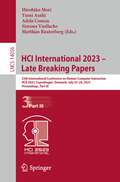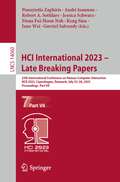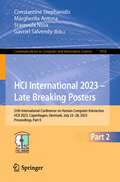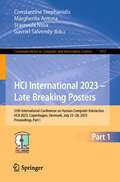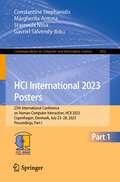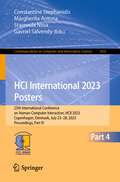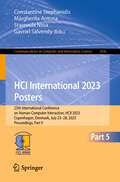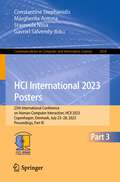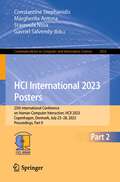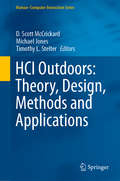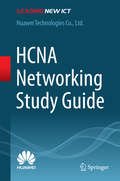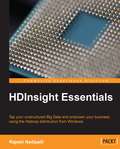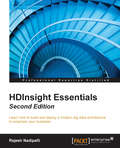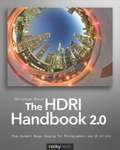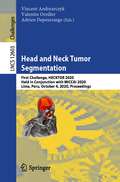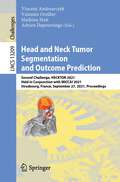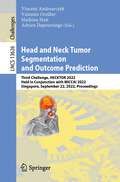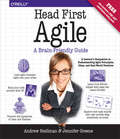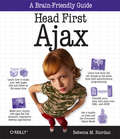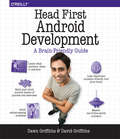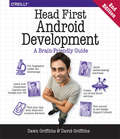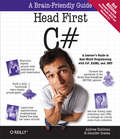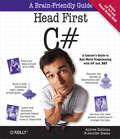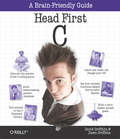- Table View
- List View
HCI International 2023 – Late Breaking Papers: 25th International Conference on Human-Computer Interaction, HCII 2023, Copenhagen, Denmark, July 23–28, 2023, Proceedings, Part III (Lecture Notes in Computer Science #14056)
by Hirohiko Mori Yumi Asahi Adela Coman Simona Vasilache Matthias RauterbergThis seven-volume set LNCS 14054-14060 constitutes the proceedings of the 25th International Conference, HCI International 2023, in Copenhagen, Denmark, in July 2023. For the HCCII 2023 proceedings, a total of 1578 papers and 396 posters was carefully reviewed and selected from 7472 submissions. Additionally, 267 papers and 133 posters are included in the volumes of the proceedings published after the conference, as “Late Breaking Work”. These papers were organized in the following topical sections: HCI Design and User Experience; Cognitive Engineering and Augmented Cognition; Cultural Issues in Design; Technologies for the Aging Population; Accessibility and Design for All; Designing for Health and Wellbeing; Information Design, Visualization, Decision-making and Collaboration; Social Media, Creative Industries and Cultural Digital Experiences; Digital Human Modeling, Ergonomics and Safety; HCI in Automated Vehicles and Intelligent Transportation; Sustainable Green Smart Cities and Smart Industry; eXtended Reality Interactions; Gaming and Gamification Experiences; Interacting with Artificial Intelligence; Security, Privacy, Trust and Ethics; Learning Technologies and Learning Experiences; eCommerce, Digital Marketing and eFinance.
HCI International 2023 – Late Breaking Papers: 25th International Conference on Human-Computer Interaction, HCII 2023, Copenhagen, Denmark, July 23–28, 2023, Proceedings, Part VII (Lecture Notes in Computer Science #14060)
by Panayiotis Zaphiris Andri Ioannou Robert A. Sottilare Jessica Schwarz Fiona Fui-Hoon Nah Keng Siau June Wei Gavriel SalvendyThis seven-volume set LNCS 14054-14060 constitutes the proceedings of the 25th International Conference, HCI International 2023, in Copenhagen, Denmark, in July 2023. For the HCCII 2023 proceedings, a total of 1578 papers and 396 posters was carefully reviewed and selected from 7472 submissions. Additionally, 267 papers and 133 posters are included in the volumes of the proceedings published after the conference, as “Late Breaking Work”. These papers were organized in the following topical sections: HCI Design and User Experience; Cognitive Engineering and Augmented Cognition; Cultural Issues in Design; Technologies for the Aging Population; Accessibility and Design for All; Designing for Health and Wellbeing; Information Design, Visualization, Decision-making and Collaboration; Social Media, Creative Industries and Cultural Digital Experiences; Digital Human Modeling, Ergonomics and Safety; HCI in Automated Vehicles and Intelligent Transportation; Sustainable Green Smart Cities and Smart Industry; eXtended Reality Interactions; Gaming and Gamification Experiences; Interacting with Artificial Intelligence; Security, Privacy, Trust and Ethics; Learning Technologies and Learning Experiences; eCommerce, Digital Marketing and eFinance.
HCI International 2023 – Late Breaking Posters: 25th International Conference on Human-Computer Interaction, HCII 2023, Copenhagen, Denmark, July 23–28, 2023, Proceedings, Part II (Communications in Computer and Information Science #1958)
by Constantine Stephanidis Margherita Antona Stavroula Ntoa Gavriel SalvendyThis two-volme set CCIS 1957-1958 is part of the refereed proceedings of the 25th International Conference on Human-Computer Interaction, HCII 2023, which was held in Copenhagen, Denmark, in July 2023. A total of 5583 individuals from academia, research institutes, industry, and governmental agencies from 88 countries submitted contributions, and 1276 papers and 275 posters were included in the proceedings that were published just before the start of the conference. Additionally, 296 papers and 181 posters are included in the volumes of the proceedings published after the conference, as “Late Breaking Work” (papers and posters). The contributions thoroughly cover the entire field of human-computer interaction, addressing major advances in knowledge and effective use of computers in a variety of application areas.
HCI International 2023 – Late Breaking Posters: 25th International Conference on Human-Computer Interaction, HCII 2023, Copenhagen, Denmark, July 23–28, 2023, Proceedings, Part I (Communications in Computer and Information Science #1957)
by Constantine Stephanidis Margherita Antona Stavroula Ntoa Gavriel SalvendyThis two-volme set CCIS 1957-1958 is part of the refereed proceedings of the 25th International Conference on Human-Computer Interaction, HCII 2023, which was held in Copenhagen, Denmark, in July 2023. A total of 5583 individuals from academia, research institutes, industry, and governmental agencies from 88 countries submitted contributions, and 1276 papers and 275 posters were included in the proceedings that were published just before the start of the conference. Additionally, 296 papers and 181 posters are included in the volumes of the proceedings published after the conference, as “Late Breaking Work” (papers and posters). The contributions thoroughly cover the entire field of human-computer interaction, addressing major advances in knowledge and effective use of computers in a variety of application areas.
HCI International 2023 Posters: 25th International Conference on Human-Computer Interaction, HCII 2023, Copenhagen, Denmark, July 23–28, 2023, Proceedings, Part I (Communications in Computer and Information Science #1832)
by Constantine Stephanidis Margherita Antona Stavroula Ntoa Gavriel SalvendyThe five-volume set CCIS 1832-1836 contains the extended abstracts of the posters presented during the 25th International Conference on Human-Computer Interaction, HCII 2023, which was held as a hybrid event in Copenhagen, Denmark, in July 2023.The total of 1578 papers and 396 posters included in the 47 HCII 2023 proceedings volumes were carefully reviewed and selected from the 7472 contributions.The posters presented in these five volumes are organized in topical sections as follows: Part I: HCI Design: Theoretical Approaches, Methods and Case Studies; Multimodality and Novel Interaction Techniques and Devices; Perception and Cognition in Interaction; Ethics, Transparency and Trust in HCI; User Experience and Technology Acceptance Studies.Part II: Supporting Health, Psychological Wellbeing, and Fitness; Design for All, Accessibility and Rehabilitation Technologies; Interactive Technologies for the Aging Population.Part III: Interacting with Data, Information and Knowledge; Learning and Training Technologies; Interacting with Cultural Heritage and Art.Part IV: Social Media: Design, User Experiences and Content Analysis; Advances in eGovernment Services; eCommerce, Mobile Commerce and Digital Marketing: Design and Customer Behavior; Designing and Developing Intelligent Green Environments; (Smart) Product Design.Part V: Driving Support and Experiences in Automated Vehicles; eXtended Reality: Design, Interaction Techniques, User Experience and Novel Applications; Applications of AI Technologies in HCI.
HCI International 2023 Posters: 25th International Conference on Human-Computer Interaction, HCII 2023, Copenhagen, Denmark, July 23–28, 2023, Proceedings, Part IV (Communications in Computer and Information Science #1835)
by Constantine Stephanidis Margherita Antona Stavroula Ntoa Gavriel SalvendyThe five-volume set CCIS 1832-1836 contains the extended abstracts of the posters presented during the 25th International Conference on Human-Computer Interaction, HCII 2023, which was held as a hybrid event in Copenhagen, Denmark, in July 2023.The total of 1578 papers and 396 posters included in the 47 HCII 2023 proceedings volumes were carefully reviewed and selected from the 7472 contributions.The posters presented in these five volumes are organized in topical sections as follows: Part I: HCI Design: Theoretical Approaches, Methods and Case Studies; Multimodality and Novel Interaction Techniques and Devices; Perception and Cognition in Interaction; Ethics, Transparency and Trust in HCI; User Experience and Technology Acceptance Studies.Part II: Supporting Health, Psychological Wellbeing, and Fitness; Design for All, Accessibility and Rehabilitation Technologies; Interactive Technologies for the Aging Population.Part III: Interacting with Data, Information and Knowledge; Learning and Training Technologies; Interacting with Cultural Heritage and Art.Part IV: Social Media: Design, User Experiences and Content Analysis; Advances in eGovernment Services; eCommerce, Mobile Commerce and Digital Marketing: Design and Customer Behavior; Designing and Developing Intelligent Green Environments; (Smart) Product Design.Part V: Driving Support and Experiences in Automated Vehicles; eXtended Reality: Design, Interaction Techniques, User Experience and Novel Applications; Applications of AI Technologies in HCI.
HCI International 2023 Posters: 25th International Conference on Human-Computer Interaction, HCII 2023, Copenhagen, Denmark, July 23–28, 2023, Proceedings, Part V (Communications in Computer and Information Science #1836)
by Constantine Stephanidis Margherita Antona Stavroula Ntoa Gavriel SalvendyThe five-volume set CCIS 1832-1836 contains the extended abstracts of the posters presented during the 25th International Conference on Human-Computer Interaction, HCII 2023, which was held as a hybrid event in Copenhagen, Denmark, in July 2023.The total of 1578 papers and 396 posters included in the 47 HCII 2023 proceedings volumes were carefully reviewed and selected from the 7472 contributions.The posters presented in these five volumes are organized in topical sections as follows: Part I: HCI Design: Theoretical Approaches, Methods and Case Studies; Multimodality and Novel Interaction Techniques and Devices; Perception and Cognition in Interaction; Ethics, Transparency and Trust in HCI; User Experience and Technology Acceptance Studies.Part II: Supporting Health, Psychological Wellbeing, and Fitness; Design for All, Accessibility and Rehabilitation Technologies; Interactive Technologies for the Aging Population.Part III: Interacting with Data, Information and Knowledge; Learning and Training Technologies; Interacting with Cultural Heritage and Art.Part IV: Social Media: Design, User Experiences and Content Analysis; Advances in eGovernment Services; eCommerce, Mobile Commerce and Digital Marketing: Design and Customer Behavior; Designing and Developing Intelligent Green Environments; (Smart) Product Design.Part V: Driving Support and Experiences in Automated Vehicles; eXtended Reality: Design, Interaction Techniques, User Experience and Novel Applications; Applications of AI Technologies in HCI.
HCI International 2023 Posters: 25th International Conference on Human-Computer Interaction, HCII 2023, Copenhagen, Denmark, July 23–28, 2023, Proceedings, Part III (Communications in Computer and Information Science #1834)
by Constantine Stephanidis Margherita Antona Stavroula Ntoa Gavriel SalvendyThe five-volume set CCIS 1832-1836 contains the extended abstracts of the posters presented during the 25th International Conference on Human-Computer Interaction, HCII 2023, which was held as a hybrid event in Copenhagen, Denmark, in July 2023.The total of 1578 papers and 396 posters included in the 47 HCII 2023 proceedings volumes were carefully reviewed and selected from the 7472 contributions.The posters presented in these five volumes are organized in topical sections as follows: Part I: HCI Design: Theoretical Approaches, Methods and Case Studies; Multimodality and Novel Interaction Techniques and Devices; Perception and Cognition in Interaction; Ethics, Transparency and Trust in HCI; User Experience and Technology Acceptance Studies.Part II: Supporting Health, Psychological Wellbeing, and Fitness; Design for All, Accessibility and Rehabilitation Technologies; Interactive Technologies for the Aging Population.Part III: Interacting with Data, Information and Knowledge; Learning and Training Technologies; Interacting with Cultural Heritage and Art.Part IV: Social Media: Design, User Experiences and Content Analysis; Advances in eGovernment Services; eCommerce, Mobile Commerce and Digital Marketing: Design and Customer Behavior; Designing and Developing Intelligent Green Environments; (Smart) Product Design.Part V: Driving Support and Experiences in Automated Vehicles; eXtended Reality: Design, Interaction Techniques, User Experience and Novel Applications; Applications of AI Technologies in HCI.
HCI International 2023 Posters: 25th International Conference on Human-Computer Interaction, HCII 2023, Copenhagen, Denmark, July 23–28, 2023, Proceedings, Part II (Communications in Computer and Information Science #1833)
by Constantine Stephanidis Margherita Antona Stavroula Ntoa Gavriel SalvendyThe five-volume set CCIS 1832-1836 contains the extended abstracts of the posters presented during the 25th International Conference on Human-Computer Interaction, HCII 2023, which was held as a hybrid event in Copenhagen, Denmark, in July 2023.The total of 1578 papers and 396 posters included in the 47 HCII 2023 proceedings volumes were carefully reviewed and selected from the 7472 contributions.The posters presented in these five volumes are organized in topical sections as follows: Part I: HCI Design: Theoretical Approaches, Methods and Case Studies; Multimodality and Novel Interaction Techniques and Devices; Perception and Cognition in Interaction; Ethics, Transparency and Trust in HCI; User Experience and Technology Acceptance Studies.Part II: Supporting Health, Psychological Wellbeing, and Fitness; Design for All, Accessibility and Rehabilitation Technologies; Interactive Technologies for the Aging Population.Part III: Interacting with Data, Information and Knowledge; Learning and Training Technologies; Interacting with Cultural Heritage and Art.Part IV: Social Media: Design, User Experiences and Content Analysis; Advances in eGovernment Services; eCommerce, Mobile Commerce and Digital Marketing: Design and Customer Behavior; Designing and Developing Intelligent Green Environments; (Smart) Product Design.Part V: Driving Support and Experiences in Automated Vehicles; eXtended Reality: Design, Interaction Techniques, User Experience and Novel Applications; Applications of AI Technologies in HCI.
HCI Outdoors: Theory, Design, Methods and Applications (Human–Computer Interaction Series)
by Michael Jones D. Scott McCrickard Timothy L. StelterAdvances in network connectivity, power consumption, and physical size create new possibilities for using interactive computing outdoors. However, moving computing outdoors can drastically change the human outdoor experience. This impact is felt in many kinds of outdoor activities such as citizen science, personal recreation, search and rescue, informal education, and others. It is also felt across outdoor settings that range from remote wilderness to crowded cities. Understanding these effects can lead to ideas, designs and systems that improve, rather than diminish, outdoor experiences. This book represents the current results emerging from recent workshops focused on HCI outdoors and held in conjunction with CHI, GROUP, UbiComp, and MobileHCI conferences. Based on feedback at those workshops, and outreach to other leaders in the field, the chapters collected were crafted to highlight methods and approaches for understanding how technologies such as handhelds, wearables, and installed standalone devices impact individuals, groups, and even communities. These findings frame new ways of thinking about HCI outdoors, explore logistical issues associated with moving computing outdoors, and probe new experiences created by involving computing in outdoor pursuits. Also important are the ways that social media has influenced preparation, experience, and reflection related to outdoor experiences. HCI Outdoors: Theory, Design, Methods and Applications is of interest to HCI researchers, HCI practitioners, and outdoor enthusiasts who want to shape future understanding and current practice related to technology in every kind of outdoor experience.
HCNA Networking Study Guide
by Huawei Technologies Co. Ltd.This book is a study guide for Huawei (HCNA) certification. It has been written to help readers understand the principles of network technologies. It covers topics including network fundamentals, Ethernet, various protocols such as those used in routing, and Huawei's own VRP operating system--all essential aspects of HCNA certification. Presenting routing and switching basics in depth, it is a valuable resource for information and communications technology (ICT) practitioners, university students and network technology fans.
HDInsight Essentials
by Rajesh NadipalliThis book is a fast-paced guide full of step-by-step instructions on how to build a multi-node Hadoop cluster on Windows servers.If you are a data architect or developer who wants to understand how to transform your data using open source software, such as MapReduce, Hive, Pig and JavaScript, and also leverage the Windows infrastructure; this book is perfect for you. It is also ideal if you are part of a team who is starting or planning a Hadoop implementation, and you want to understand the key components of Hadoop, and how HDInsight provides added value in administration and reporting.
HDInsight Essentials - Second Edition
by Rajesh NadipalliIf you want to discover one of the latest tools designed to produce stunning Big Data insights, this book features everything you need to get to grips with your data. Whether you are a data architect, developer, or a business strategist, HDInsight adds value in everything from development, administration, and reporting.
HDR Photography Photo Workshop
by Robert Correll Peter CarrLearn the intricacies of High Dynamic Range photography from experts and get feedback on your workHigh Dynamic Range (HDR) photography offers a new range of creative possibilities to the photographer who is skilled in the technique. HDR requires specific camera skills as well as the use of specialized software, and the photographers who wrote this book are experts in both. They explain the process of shooting the same subject at different exposures, combining those shots into a single HDR image, fine-tuning brightness and contrast, minimizing noise, layering images, and more, including creative techniques with Photoshop and Lightroom.You can submit your HDR images for feedback at photoworkshop.com.High Dynamic Range (HDR) photography offers creative possibilities through specific camera and software techniques that produce highly detailed and imaginative imagesTwo professional photographers team up to provide expert instruction in HDR camera and software techniques for those new to HDRCovers the latest software and concepts, a comprehensive exploration of HDR basics, various techniques for shooting and merging images, and creative tricks with Photoshop and LightroomLavishly illustrated with new examples and full of suggestions for developing a personal HDR styleStudents can upload their own images for feedback at photoworkshop.comAny photographer who is new to HDR will find this guide loaded with helpful instructions and encouraging advice.
The HDRI Handbook 2.0
by Christian BlochHigh dynamic range imaging (HDRI) takes photography to a whole new level. It opens the door to unprecedented creative freedom in digital post-processing by capturing everything from the darkest shadows to the brightest highlights. HDRI means truly lossless image editing, full exposure control, and the ability to master any scene's contrast without artificial lighting and preserve all light from a scene so it can be digitally revisited anytime in the future. Combined with panoramic photography, this captured light can even be used to render 3D objects with a deceivingly realistic appearance. In 2007, The HDRI Handbook was the first book to present this revolutionary new field to a larger audience. These days HDRI is a fully mature technology available to everyone. Real estate and landscape photographers have adopted it as part of their regular workflow, it has become one of the hottest trends for ambitious amateurs and creative professionals alike, and the modern movie industry would be completely dysfunctional without it. Now The HDRI Handbook 2. 0 redefines its own gold standard. It has been completely rewritten and is packed with practical hints and tips, background knowledge, reference tools, breathtaking artist portfolios, and inspiring interviews. The book includes dozens of new step-by-step tutorials, which are easy to follow with the material provided on the DVD. Beginners will get a methodically solid introduction and advanced readers will be able to refine their technique to perfection. Whether you are a photographer, CG artist, compositor, or cinematographer, this book is sure to enlighten you. Topics include: Understanding the foundation of HDRI HDR software comparisons and evaluations Capturing HDR images: today and tomorrow Tonemapping for creating superior prints HDR image processing and compositing Shooting and stitching HDR panoramas Image-based lighting and CG rendering 2. 0 updates include: New cameras, sensors, and HDR beamsplitter rigs Open Camera Controller for endless auto-bracketing Correct RAW pre-processing and ghost removal Dozens of practical, easy-to-follow tutorials A structured approach to tonemapping, inspired by Ansel Adams Set etiquette and tips for capturing HDR panos for visual effects Seven artist spotlights showing unique perspectives on HDRI Seven crossword puzzles: a fun way to test yourself A companion DVD loaded with goodies
Head and Neck Tumor Segmentation: First Challenge, HECKTOR 2020, Held in Conjunction with MICCAI 2020, Lima, Peru, October 4, 2020, Proceedings (Lecture Notes in Computer Science #12603)
by Vincent Andrearczyk Valentin Oreiller Adrien DepeursingeThis book constitutes the First 3D Head and Neck Tumor Segmentation in PET/CT Challenge, HECKTOR 2020, which was held in conjunction with the 23rd International Conference on Medical Image Computing and Computer-Assisted Intervention, MICCAI 2020, in Lima, Peru, in October 2020. The challenge took place virtually due to the COVID-19 pandemic.The 2 full and 8 short papers presented together with an overview paper in this volume were carefully reviewed and selected form numerous submissions. This challenge aims to evaluate and compare the current state-of-the-art methods for automatic head and neck tumor segmentation. In the context of this challenge, a dataset of 204 delineated PET/CT images was made available for training as well as 53 PET/CT images for testing. Various deep learning methods were developed by the participants with excellent results.
Head and Neck Tumor Segmentation and Outcome Prediction: Second Challenge, HECKTOR 2021, Held in Conjunction with MICCAI 2021, Strasbourg, France, September 27, 2021, Proceedings (Lecture Notes in Computer Science #13209)
by Vincent Andrearczyk Valentin Oreiller Mathieu Hatt Adrien DepeursingeThis book constitutes the Second 3D Head and Neck Tumor Segmentation in PET/CT Challenge, HECKTOR 2021, which was held in conjunction with the 24th International Conference on Medical Image Computing and Computer-Assisted Intervention, MICCAI 2021. The challenge took place virtually on September 27, 2021, due to the COVID-19 pandemic.The 29 contributions presented, as well as an overview paper, were carefully reviewed and selected form numerous submissions. This challenge aims to evaluate and compare the current state-of-the-art methods for automatic head and neck tumor segmentation. In the context of this challenge, a dataset of 325 delineated PET/CT images was made available for training.
Head and Neck Tumor Segmentation and Outcome Prediction: Third Challenge, HECKTOR 2022, Held in Conjunction with MICCAI 2022, Singapore, September 22, 2022, Proceedings (Lecture Notes in Computer Science #13626)
by Vincent Andrearczyk Valentin Oreiller Mathieu Hatt Adrien DepeursingeThis book constitutes the Third 3D Head and Neck Tumor Segmentation in PET/CT Challenge, HECKTOR 2022, which was held in conjunction with the 25th International Conference on Medical Image Computing and Computer-Assisted Intervention, MICCAI 2022, on September 22, 2022.The 22 contributions presented, as well as an overview paper, were carefully reviewed and selected from 24 submissions. This challenge aims to evaluate and compare the current state-of-the-art methods for automatic head and neck tumor segmentation. In the context of this challenge, a dataset of 883 delineated PET/CT images was made available for training.
Head First Agile: A Brain-Friendly Guide to Agile Principles, Ideas, and Real-World Practices
by Andrew Stellman Jennifer GreeneWhat will you learn from this book?It’s an exciting time to be agile! Finally, our industry has found a real, sustainable way to solve problems that have perplexed generations of software developers. Agile not only leads to great results, but teams say they also have a much better time at work. Yet … if agile is so great, why isn’t everyone doing it? It turns out that agile can work well for one team and cause serious problems for another. The difference is team mindset. With this brain-friendly guide, you’ll change the way you think about your projects—for the better!Preparing for your PMI-ACP certification? This book has everything you need to pass the exam: a complete study guide, tips, exam questions, and a full-length practice PMI-ACP exam.Why does this book look so different?Based on the latest research in cognitive science and learning theory, Head First Agile uses a visually rich format to engage your mind, rather than a text-heavy approach that puts you to sleep. Why waste your time struggling with new concepts? This multi-sensory learning experience is designed for the way your brain really works.
Head First Ajax: A Brain-Friendly Guide (Head First)
by Rebecca M. RiordanAjax is no longer an experimental approach to website development, but the key to building browser-based applications that form the cornerstone of Web 2.0. Head First Ajax gives you an up-to-date perspective that lets you see exactly what you can do -- and has been done -- with Ajax. With it, you get a highly practical, in-depth, and mature view of what is now a mature development approach. Using the unique and highly effective visual format that has turned Head First titles into runaway bestsellers, this book offers a big picture overview to introduce Ajax, and then explores the use of individual Ajax components -- including the JavaScript event model, DOM, XML, JSON, and more -- as it progresses. You'll find plenty of sample applications that illustrate the concepts, along with exercises, quizzes, and other interactive features to help you retain what you've learned. Head First Ajax covers:The JavaScript event model Making Ajax requests with XMLHTTPREQUEST objects The asynchronous application model The Document Object Model (DOM) Manipulating the DOM in JavaScript Controlling the browser with the Browser Object Model XHTML Forms POST Requests XML Syntax and the XML DOM tree XML Requests & Responses JSON -- an alternative to XML Ajax architecture & patterns The Prototype LibraryThe book also discusses the server-side implications of building Ajax applications, and uses a "black box" approach to server-side components. Head First Ajax is the ideal guide for experienced web developers comfortable with scripting -- particularly those who have completed the exercises in Head First JavaScript -- and for experienced programmers in Java, PHP, and C# who want to learn client-side programming.
Head First Android Development
by David Griffiths Dawn GriffithsWhat will you learn from this book?If you have an idea for a killer Android app, this book will help you build your first working application in a jiffy. You'll learn hands-on how to structure your app, design interfaces, create a database, make your app work on various smartphones and tablets, and much more. It's like having an experienced Android developer sitting right next to you! All you need is some Java know-how to get started.Why does this book look so different?Based on the latest research in cognitive science and learning theory, Head First Android Development uses a visually rich format to engage your mind, rather than a text-heavy approach that puts you to sleep. Why waste your time struggling with new concepts? This multi-sensory learning experience is designed for the way your brain really works.
Head First Android Development: A Brain-Friendly Guide
by David Griffiths Dawn GriffithsWhat will you learn from this book?If you have an idea for a killer Android app, this fully revised and updated edition will help you build your first working application in a jiffy. You’ll learn hands-on how to structure your app, design flexible and interactive interfaces, run services in the background, make your app work on various smartphones and tablets, and much more. It’s like having an experienced Android developer sitting right next to you! All you need to get started is some Java know-how.Why does this book look so different?Based on the latest research in cognitive science and learning theory, Head First Android Development uses a visually rich format to engage your mind, rather than a text-heavy approach that puts you to sleep. Why waste your time struggling with new concepts? This multi-sensory learning experience is designed for the way your brain really works.
Head First C#
by Jennifer Greene Andrew StellmanYou want to learn C# programming, but you're not sure you want to suffer through another tedious technical book. You're in luck: Head First C# introduces this language in a fun, visual way. You'll quickly learn everything from creating your first program to learning sophisticated coding skills with C# 5.0, Visual Studio 2012, and the .NET 4.5 Framework, while avoiding common errors that frustrate many students. The third edition offers several hands-on labs along the way to help you build and test programs using skills you've learned up to that point. In the final lab, you'll put everything together. From objects to garbage collection and from exceptions to interactions, you'll learn C# in a way that engages and entertains your brain. Here are a few of the topics you'll learn: Start by building a useful application with pre-built components in Visual Studio 2012 Discover how objects work, using real-world examples Store numbers, text, and other basic data types using primitives Save complex data in files and databases with great C# tools Build intuitive and easy-to-use interfaces by following simple rules Design your code to catch exceptions--things you don't expect Develop good programming habits, such as refactoring code and applying unit tests Learn how web services put your programs in touch with the rest of the world Make it easy for other people to install your software
Head First C# (Head First)
by Jennifer Greene Andrew StellmanHead First C# is a complete learning experience for object-oriented programming, C#, and the Visual Studio IDE. Built for your brain, this book covers C# 3.0 and Visual Studio 2008, and teaches everything from language fundamentals to advanced topics including garbage collection, extension methods, and double-buffered animation. You'll also master C#'s hottest and newest syntax, LINQ, for querying SQL databases, .NET collections, and XML documents. By the time you're through, you'll be a proficient C# programmer, designing and coding large-scale applications.Every few chapters you will come across a lab that lets you apply what you've learned up to that point. Each lab is designed to simulate a professional programming task, increasing in complexity until-at last-you build a working Invaders game, complete with shooting ships, aliens descending while firing, and an animated death sequence for unlucky starfighters. This remarkably engaging book will have you going from zero to 60 with C# in no time flat.
Head First C: A Brain-Friendly Guide
by Dawn Griffiths David GriffithsEver wished you could learn C from a book? Head First C provides a complete learning experience for C and structured imperative programming. With a unique method that goes beyond syntax and how-to manuals, this guide not only teaches you the language, it helps you understand how to be a great programmer. You'll learn key areas such as language basics, pointers and pointer arithmetic, and dynamic memory management. Advanced topics include multi-threading and network programming--topics typically covered on a college-level course. This book also features labs: in-depth projects intended to stretch your abilities, test your new skills, and build confidence. Head First C mimics the style of college-level C courses, making it ideal as an accessible textbook for students. We think your time is too valuable to waste struggling with new concepts. Using the latest research in cognitive science and learning theory to craft a multi-sensory learning experience, Head First C uses a visually rich format designed for the way your brain works, not a text-heavy approach that puts you to sleep.
